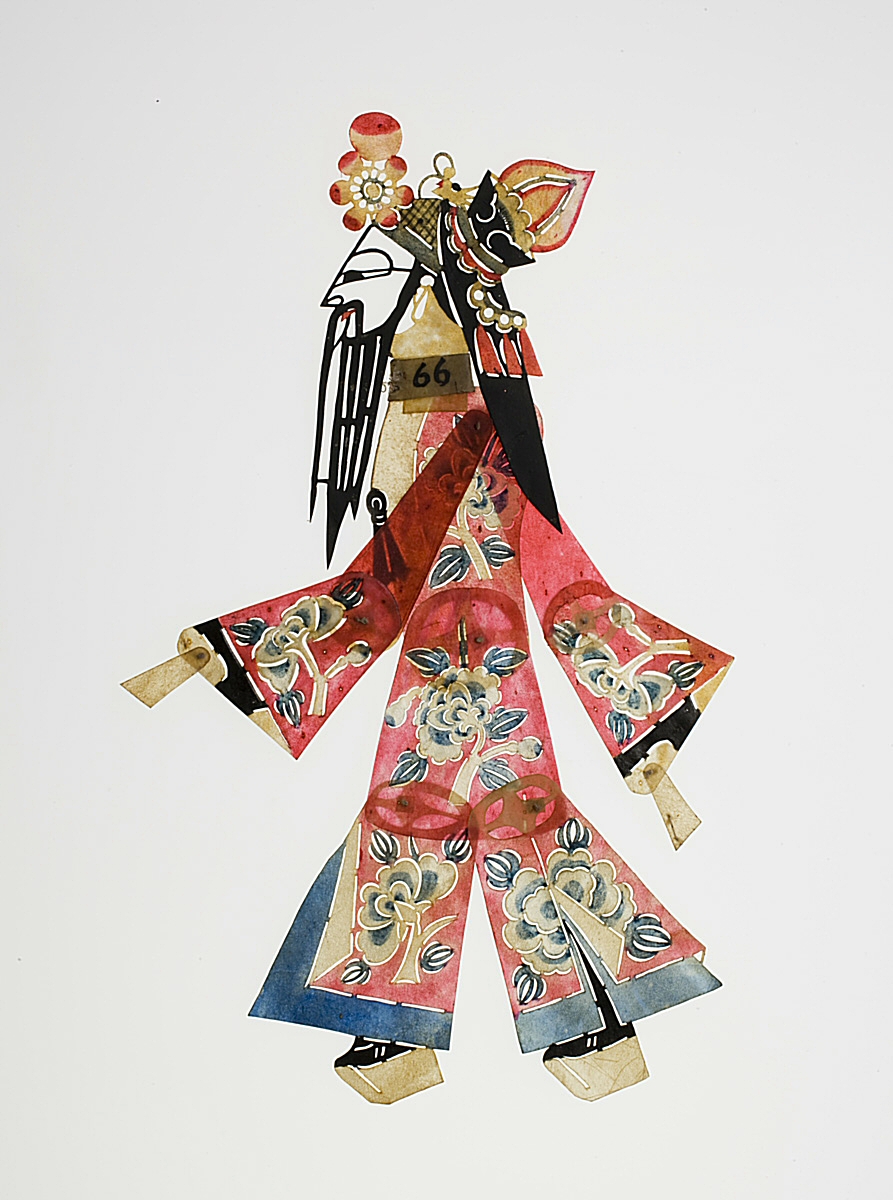The Monkey King
Outcome : Students demonstrate mastery of narrative content and develop vocabulary by supplying words deleted from a text of "The Monkey King" story and through an expository writing activity summarizing the "Monkey King" story. Includes a shadow puppet extension activity.

The Monkey King, 1977. By Guan Liang (Chinese, 1900-1986). Hanging Scroll, ink and colors on paper. Gift of the Jack Anderson Collection, 1994.116.
Early in the Tang dynasty the young Chinese monk traveled over 10,000 miles to India and back in order to study with Buddhist masters and bring back Sanskrit sutras containing Buddhist teachings to China. His travels took him across incredibly dangerous and rugged terrain along the Silk Road through what is now Afghanistan, through much of India, and back. His journey lasted fourteen years and he returned to China with 657 scrolls, many Buddhist relics, and a knowledge of Sanskrit that would allow him to become an important translator of Buddhist texts into Chinese. But in addition to contributing to the spread of Buddhism in China, the stories of his exotic travels through dangerous and foreign territory fired the popular imagination.
He chronicled his adventures abroad in a travelogue published in 646 which inspired popular legends, and in the Ming dynasty was mythologized in the classical novel, Journey to the West. In the Ming novel, Xuanzang is protected on his pilgrimage by three disciples and a magical horse. The disciples and horse are all minor deities sent on the pilgrimage by the compassionate bodhisattva Guanyin (Indian: Avalokiteshvara) to atone for various crimes in Heaven. All of these characters have continued to find life in art and performance throughout East Asia. The most popular of the disciples, Monkey or Sun Wu Kong, continues to be an important folk hero in Chinese opera and popular culture including Japanese manga, video games, and cartoons.
This unit integrates the mythologized story of Monkey’s adventures with Xuanzang into the Language Arts curriculum using the two locally-available inexpensive texts below:
Jiang, Ji-Li. The Magical Monkey King: Mischief in Heaven. Fremont: Shen’s Books, 2004.
Kherdian, David. Monkey: A Journey to the West. Boston: Shambhala, 2000.
Includes a fine arts extension with a hands-on puppet project (see “Downloads” above).
Procedure:
- Distribute the Story Background for Cloze Activity and have students read aloud in class
- Distrubute the Ji-Li Jiang Cloze Handout to students and have them complete it either in class or as a take-home assignment
- Go over the answers to the Ji-Li Jiang Cloze Handout in class
- Distribute the Expository Writing Assignment and have students complete as a take-home assignment
Extension:
See: Chinese Shadow Puppets Extension (above)

